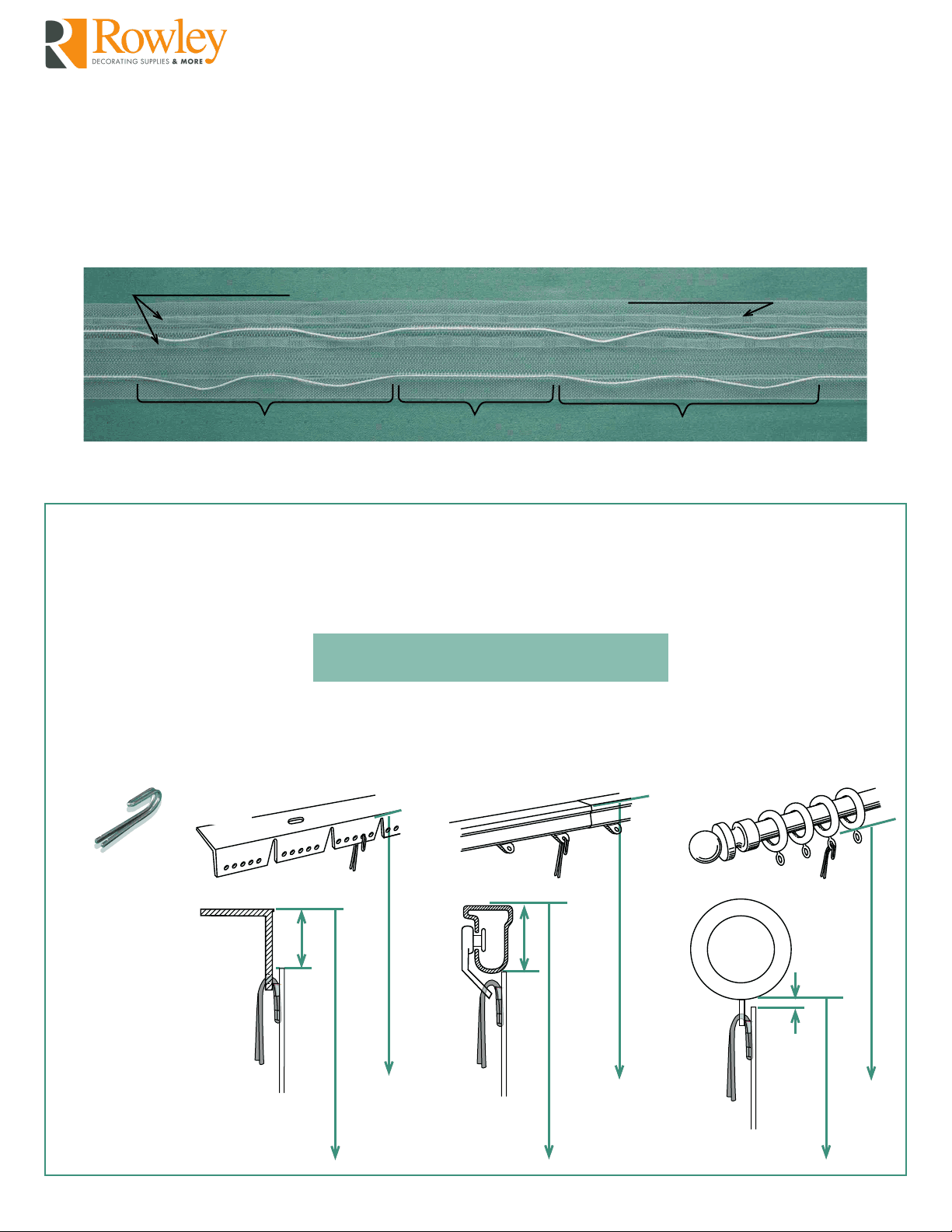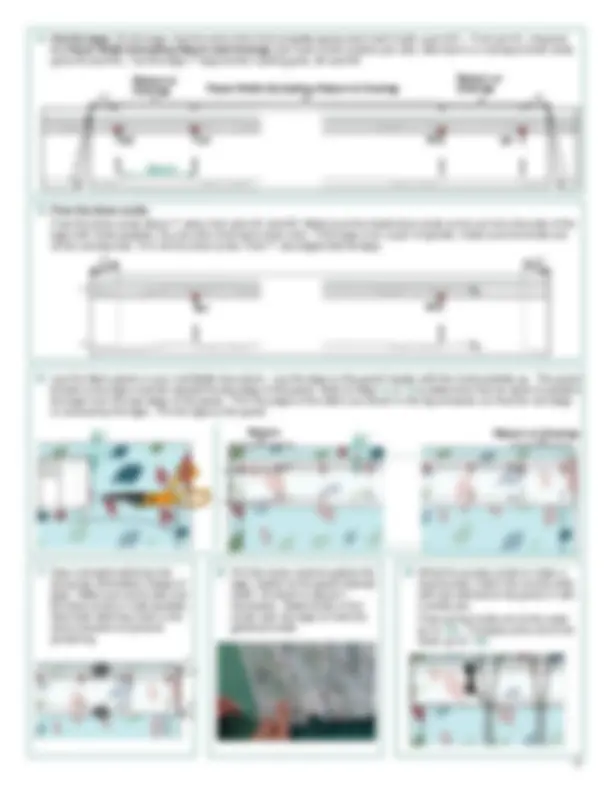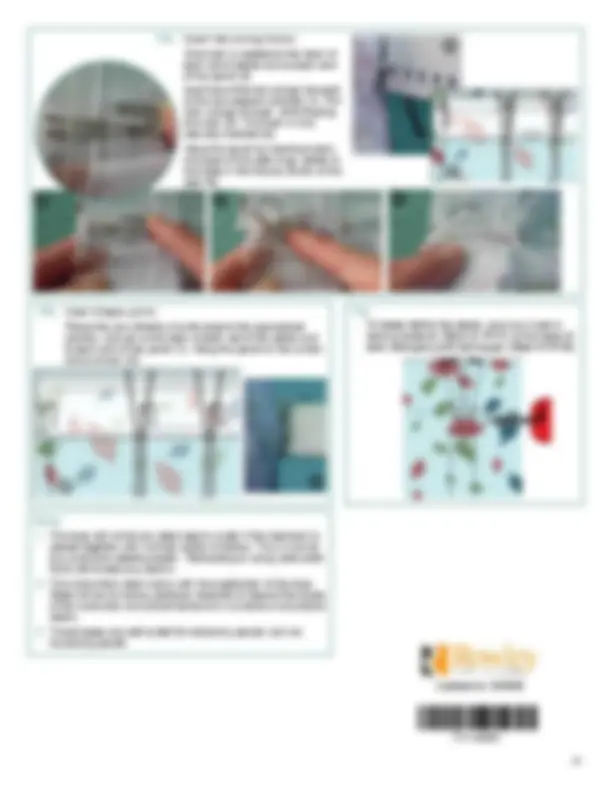




Study with the several resources on Docsity

Earn points by helping other students or get them with a premium plan


Prepare for your exams
Study with the several resources on Docsity

Earn points to download
Earn points by helping other students or get them with a premium plan
Community
Ask the community for help and clear up your study doubts
Discover the best universities in your country according to Docsity users
Free resources
Download our free guides on studying techniques, anxiety management strategies, and thesis advice from Docsity tutors
Instructions on how to use translucent two pleat pinch shirring tape (tt21) for creating pleats on drapery panels. It covers hardware considerations, panel length measurements, and step-by-step instructions for inserting hooks or pins and gathering the tape. The document also includes information on fabric length requirements and panel width calculations.
What you will learn
Typology: Lecture notes
1 / 4

This page cannot be seen from the preview
Don't miss anything!



- Excellent for sheer fabrics. - Less obvious when used with any fabrics. - Creates two pleat pinch pleats on panels, top treatments etc. quickly and automatically.
In the pictures below, the draw cords were slightly pulled out to show the spaces and pleats.
Pleat = 5"
Drapery Hook Pockets
Pleat = 5" Space = 3.2"
Green Thread Indicates a Fullness of 2 1 / 2 Times
tapes. The two-prong drapery hooks (Stock #: DP20 ) should be used with these types of hardware.
To determine how far down the top edge of the tape should be from the top edge of the panel: Insert a hook into the piece of tape you are going to use. Take the measurement ( C ) as shown in the figures below. The translucent tape must be positioned so that the distance between the top edge of the tape and that of the panel is C. This allows the hardware to be adequately covered by the treatment. Refer to Step 10a to learn how to insert the hook.
**Panel Finished Length
To determine the panel length: Measure from the top of the strip or rod ( A ) or from the screw eye at the bottom of the ring ( B ) to the window sill or floor or any other desired panel finished length. Fabric Length Requirement :
Tape
Pole Ring
Tape
Pleat Pin Strip
Tape
Updated on 2/26/
Number of Spaces x 8.2 + 5
Three typical panel arrangements are shown below. The abbreviations are explained as follows: FW: Panel finished width excluding return and overlap. R: Return. O: Overlap. In Figure (2) , although the flaps do not actually overlap, we will still call them overlaps for simplicity.
(3) A pair of panels meeting in the center
(2) A pair of stationary panels not meeting in the center
(1) A single stationary panel
Fully assemble the panels to the size as shown in the figure below. Fold the 5" top flap to the back Always round the answer up to the nearest whole number side and press. to get the number of spaces. (e.g. if answer is 13.2, the number of the spaces is 14).
drapery pins (Stock# DP50, DP53 ) must be used. The top edge of the tape may be placed 1 / 4 " to 2" below the top edge of the panel, based on the desired effects one wishes to achieve. A larger distance creates a ruffle effect. Please note that the drapery header may have a tendency to dip forward when drapery pins are used.
Step 2. Calculate the flat Panel Width Excluding Return and Overlap :
The calculations outlined below will let you make a finished panel width the same or slightly wider than what is required. This is due to the fixed spacing of the tape. The slightly wider finished width will never be a problem for a pair of panels not meeting in the center (Fig. 2). However, for a single stationary panel (Fig. 1) or a pair of panels meeting in the center (Fig. 3) , and if the panel widths are extremely narrow, the extra width may cause panels to not hang evenly.
**Complete Panel Width
Step 4. Total Fabric Width Requirement :
Step 3. Calculate the Complete Panel Width.
Step 1. Estimate the Number of Spaces per panel using desired finished width excluding return and overlap:
**Flat Panel Width Excluding Return and Overlap
Complete Panel Width
Panel Finished Length
Updated on 2/26/
TT21+
pieced together with multiple widths of fabrics. This is true for any automatic pleating tapes. Railroading or using wide width fabric eliminates any seams.
Detail of how to make a particular treatment is beyond the scope of this instruction and should be found in numerous instructional books.
traversing panels.
One hook is needed at the back of each set of pleats and at each end of the panel (4). Insert one of the two prongs into each of the two adjacent pockets (1). Pull both prongs through, while flipping the hook (2). The hook is now securely inserted (3). Hang the panel by inserting hooks into eyes of the pole rings, glides or the holes in the strip as shown at the right (5).
Pierce the pins directly into the tape at the appropriate position, one pin at the back of each set of the pleats and at each end of the panel (1). Hang the panel on the curtain rod as shown (2).
To better define the pleats, one may insert a tacking fastener (Stock #: ST27 ) at the base of each pleat group with tacking gun (Stock #: ST26 ).